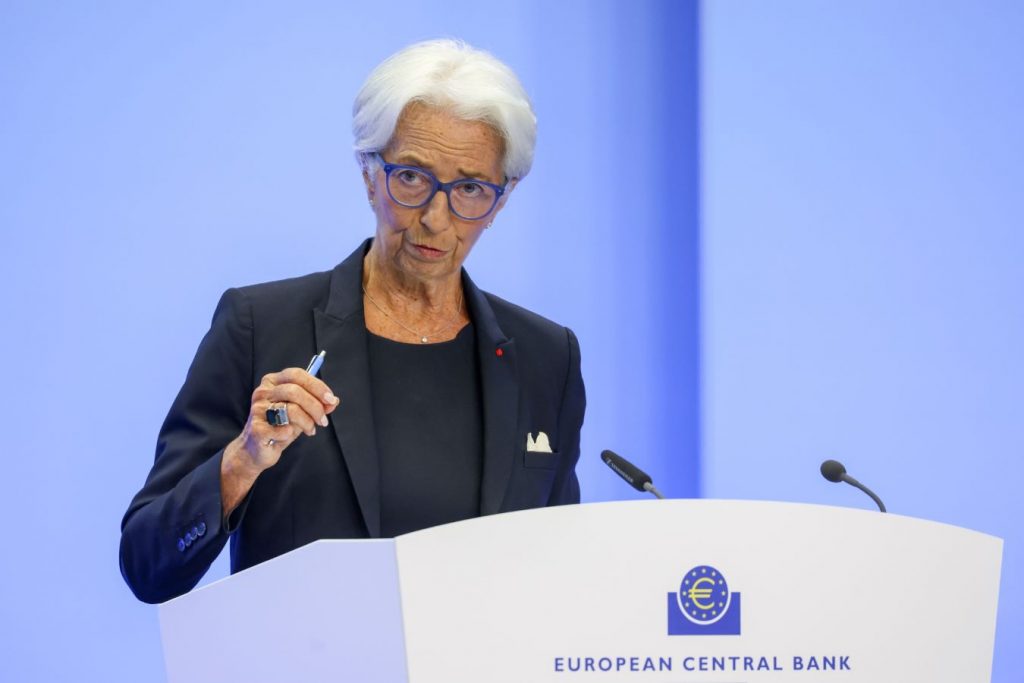This week’s interest-rate cut by the European Central Bank (ECB) marks a significant milestone. For the first time in two decades, policymakers are initiating a monetary-easing cycle without being compelled by a financial emergency. Instead, investors are signaling confidence in the euro area, keeping yields stable.
Economic Challenges Under the Surface
However, beneath this calm facade, the eurozone economy is beginning to face the consequences of long-standing issues. Increasingly overshadowed by the dynamism of the US and the rise of China, the eurozone is grappling with several significant challenges. These include sluggish growth, weak productivity, unfavorable demographics, and high public debt in key countries.
Benign markets and a recovering economy provide Brussels and national capitals with a rare opportunity to address these challenges. If politicians, currently navigating European elections, fail to implement growth-enhancing reforms and improve public finances soon. The region risks becoming increasingly irrelevant.
“Without a major jolt,” said Jamie Rush, chief European economist for Bloomberg Economics. “The European Union will become a much-diminished global power.” “This could leave the US battling it out with China for economic supremacy.”
Productivity and Growth Concerns
The euro area’s potential GDP gap with the US, driven by productivity shortfalls, stands at about 18%. The ECB rate cut comes as the worst bout of inflation in the currency’s history seems to be over, and a shallow recession has ended with unexpected growth.
The spread between Italian and German bonds, a key risk measure, narrowed to a two-year low earlier in 2024. Although yields have risen slightly as investors gauge the ECB’s capacity for further cuts amid a more resilient economy, there’s no sign of the fragmentation fears that plagued markets before the first hike in 2022.
“‘Europe’s a basket case’—it’s all you ever used to hear” from investors outside the region, said Roger Hallam, global head of rates at Vanguard Asset Management. “You don’t hear that now.”
A More Cohesive Policy Landscape
Supporting this view is a more cohesive policy backdrop at the regional level. This includes the European Union’s unprecedented pandemic-era recovery program, NextGenEU, which involved pooling debt. Additionally, new ECB tools have been introduced to deliver stimulus and stabilize bond markets.

Economic Outlook: Autumn Rate Cuts Expected as Inflation Slows.
The recent release of economic indicators has sparked optimism that the Federal Reserve could move forward with interest rate…
Structural Challenges Persist
Yet, the euro zone’s long-term problems appear more ominous than ever. “Europe is doing better now,” warned Alfred Kammer, a senior official at the International Monetary Fund in May. “but deep structural challenges—aging, climate change, and global fragmentation—await.”
Weak productivity, resulting in poor potential growth, is a significant issue. According to a European Centre for International Political Economy study in May, the EU has consistently lagged behind the US in this area since the turn of the century. This has led to slower improvements in living standards and a decline in global economic power.
Aging Population and Debt Sustainability
“The birth rate is much worse than expected,” said Oliver Rakau, an economist at Oxford Economics. “This is not a problem in two, three, or five years, but it is a big problem in the long run.” More pressing is the deterioration of public finances in countries already struggling to enforce fiscal restraint. Italy is poised to have Europe’s largest debt pile within three years, according to Scope Ratings. IMF forecasts show debt as a percentage of GDP rising in Italy, France, and Belgium, with deficits well above the EU’s 3% ceiling.
Urgency for Reforms and Growth Initiatives
Governments might aim to control debt deficits through spending cuts or tax increases, but their best prospects for long-term public finance repair lie in achieving better economic growth.
At the EU level, ideas for growth are proliferating. Former Italian Prime Minister Enrico Letta’s recent report on the future of the bloc’s single market advocates for telecom consolidation and further energy market integration. Former ECB President Mario Draghi will soon release a report on European competitiveness. The report will call for “radical change,” including a lower regulatory burden and substantial subsidies.
Greater Momentum for Self-Improvement
French President Emmanuel Macron is pursuing greater capital market integration to replicate the US’s success in creating large finance pools.
“My concern is not just France, it is Europe in comparison with the US and China,” Macron told Bloomberg last month. “My top priority is to have a European policy saying we have to be much more innovative,” stated the speaker. They continued, “We have to create a much more efficient capital market, we have to invest much more from a common budget as Europeans, and from the private sector.”
“There’s arguably more momentum than usual in the EU’s drive for self-improvement,” noted the observer. They continued, “although the bloc has never lacked ideas that often fail to materialize.”
“I’m hopeful that the Letta report, the upcoming Draghi report, and the EU elections will act as catalysts. These events provide an opportunity for policymakers to focus on what matters,” said Paul Hollingsworth, chief European economist at BNP Paribas and the ECB.
Unlock 2 years of boundless insights with Bloomberg News Digital Subscription. Beyond mere access, it’s your gateway to unparalleled global financial understanding. Students, seize a spectacular 70% discount, transforming this offer into an irresistible opportunity.

